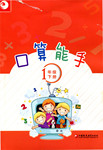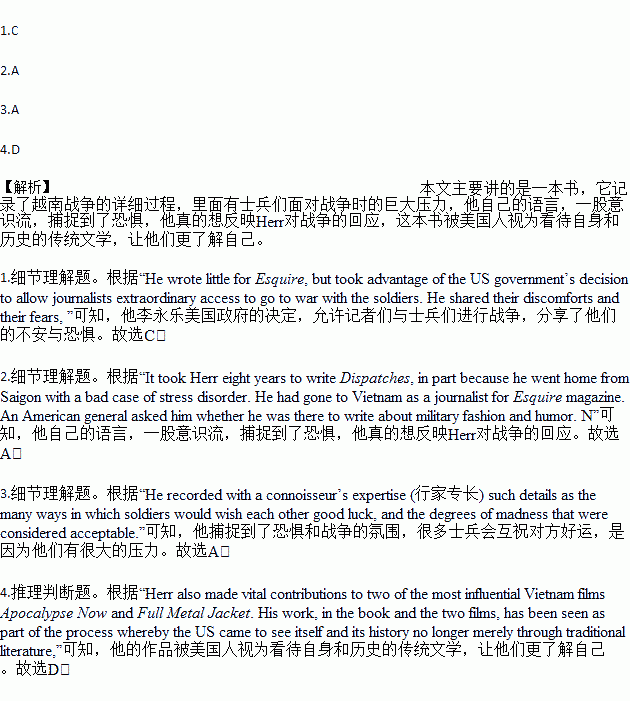题目内容
Michael Herr, who has died aged 76, was the author of Dispatches (1977), the best book about the Vietnam War. It took Herr eight years to write Dispatches, in part because he went home from Saigon with a bad case of stress disorder. He had gone to Vietnam as a journalist for Esquire magazine. An American general asked him whether he was there to write about military fashion and humor. No. He wrote little for Esquire, but took advantage of the US government’s decision to allow journalists extraordinary access to go to war with the soldiers. He shared their discomforts and their fears, witnessed their death and recorded their language.
His own language, a stream of consciousness pulsing with energy, but masterfully controlled, captured the fear and the horror, but also the excitement, of the war in the jungle and paddy fields. He recorded with a connoisseur’s expertise (行家专长) such details as the many ways in which soldiers would wish each other good luck, and the degrees of madness that were considered acceptable.
The power of the book, perhaps, comes from Herr’s insistence on describing the war, or more precisely his own responses to it, rather than protesting against it. It also comes from the ceaseless accompaniment of two elements, drugs and music — more particularly rock music, and especially the music of Jimi Hendrix. Herr himself spent drug-fuelled weekends in a flat in Saigon, staring at an ancient French map of Indochina. He met soldiers with a left pocket full of Dexedrine, the “upper” (兴奋剂) officially administered by the army to get them into battle, and a right pocket full of “downers” (镇定剂) to get them through it.
Dispatches did not come out until 1977, when the country was beginning to have its mind on other problems, but it did more, perhaps, than any other book to freeze an image of despair and a sense of waste about the war, rather as the trench poets of 1914 —1918 did in Britain.
Herr also made vital contributions to two of the most influential Vietnam films Apocalypse Now and Full Metal Jacket. His work, in the book and the two films, has been seen as part of the process whereby the US came to see itself and its history no longer merely through traditional literature, but in sounds and images.
1.Why did Michael Herr go to Vietnam during the war years?
A. To join the soldiers in military actions.
B. To report military actions and advances.
C. To give an authentic account of the war.
D. To write about military fashion and humor.
2.Which of the following about Dispatches is true?
A. It truly reflects Herr’s responses to the war.
B. Music and drugs give the author inspiration.
C. Its language is casually selected and organized.
D. It fully describes Herr’s protest against the war.
3.US soldiers brought drugs with them during the war most probably because .
A. they suffered stress disorder
B. they were addicted to drugs
C. they used them to cure the wounds
D. they exchanged them for music records
4.What can we learn from the last paragraph?
A. Herr directed two influential Vietnam films.
B. Herr’s work played a positive role in traditional literature.
C. Herr stopped writing after the book Dispatches was published.
D. Herr’s work offered Americans more ways to know themselves.
 口算能手系列答案
口算能手系列答案
